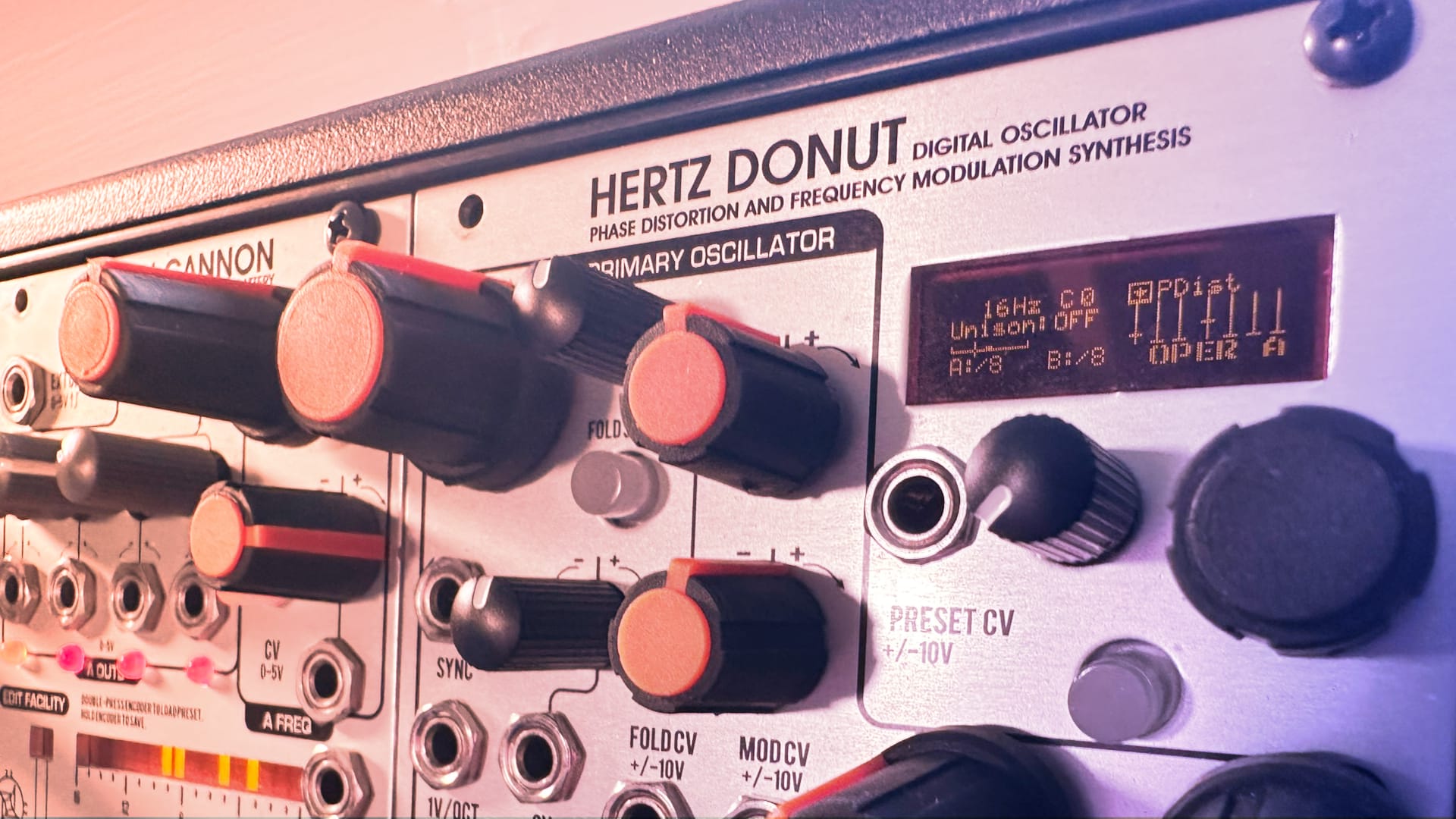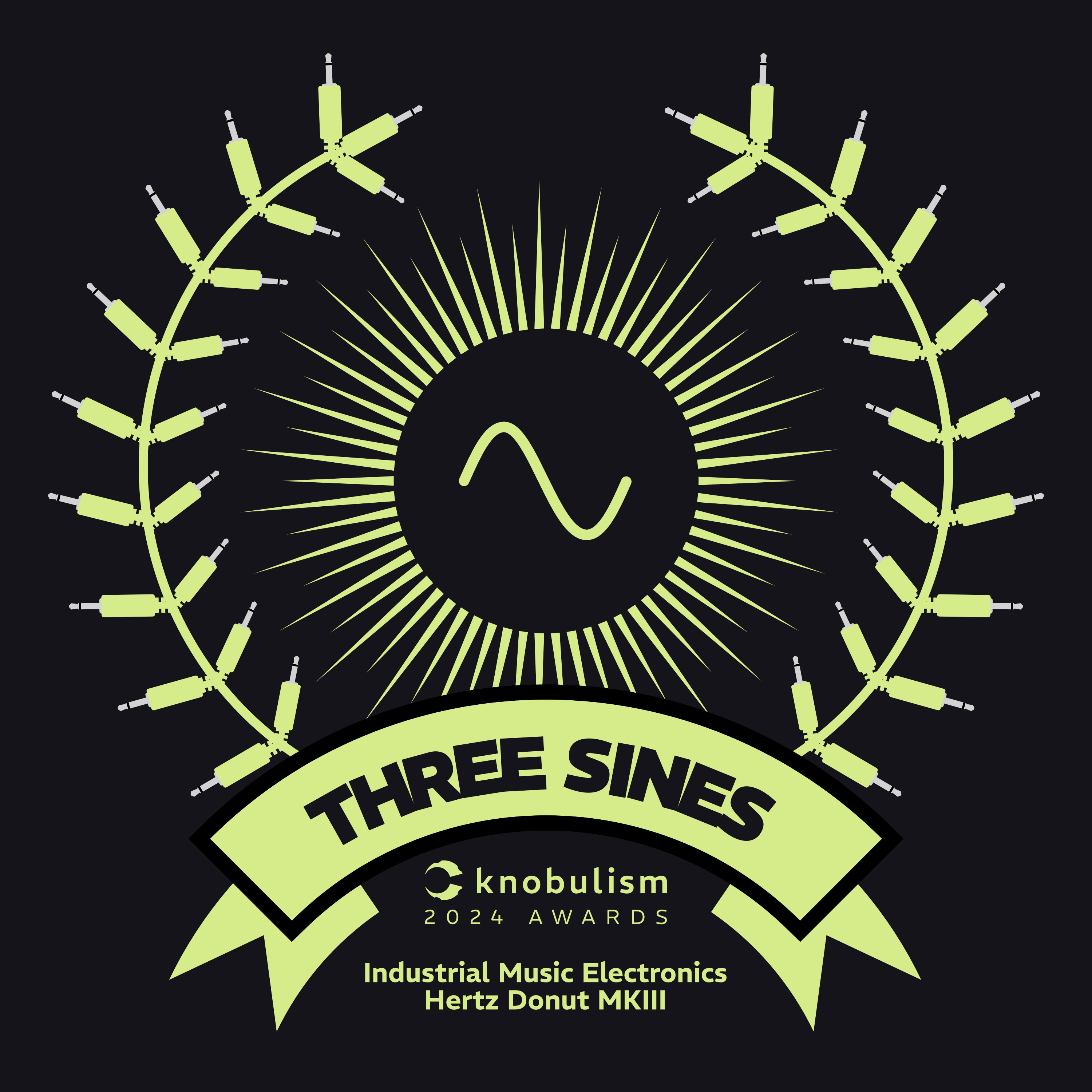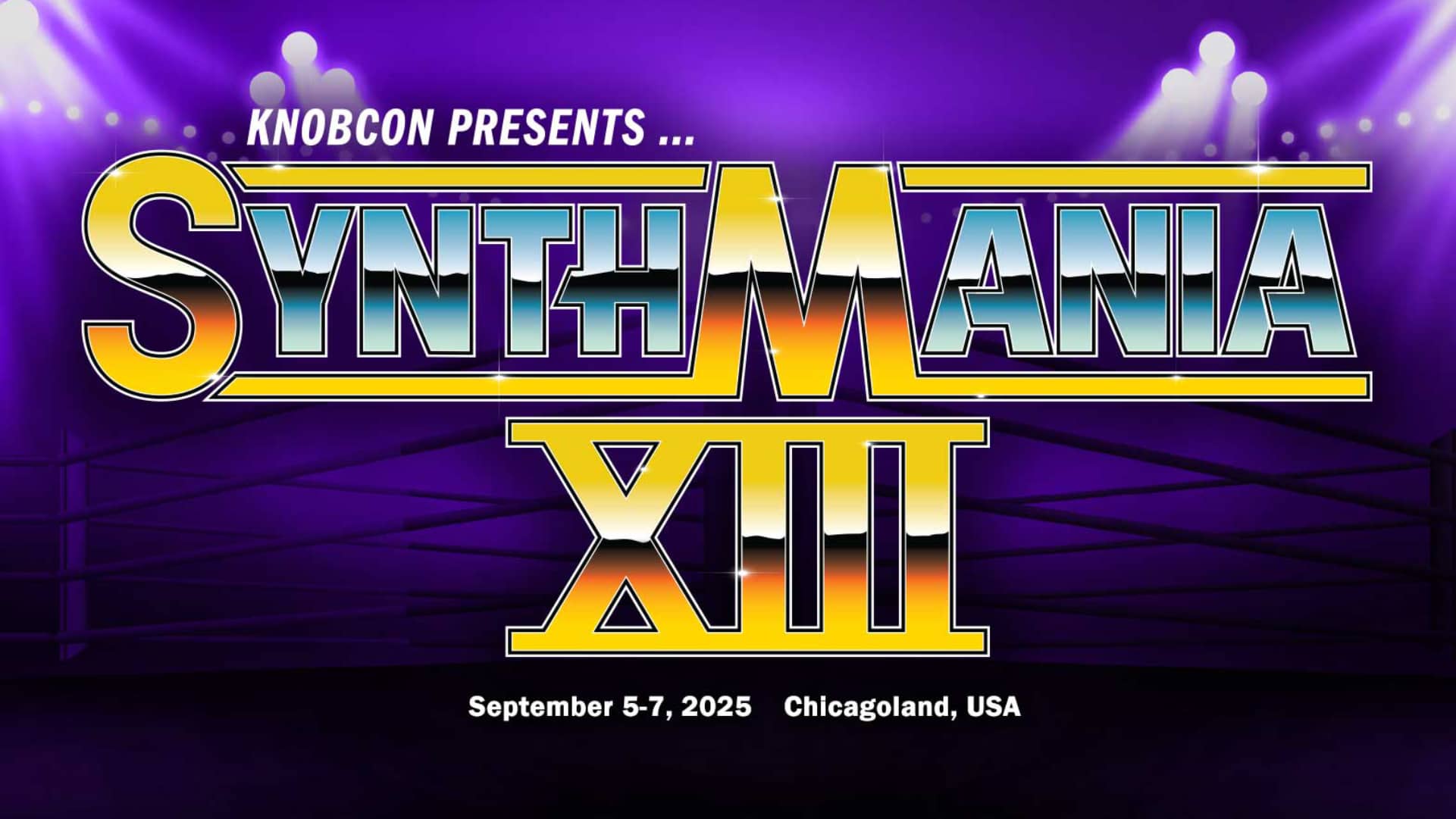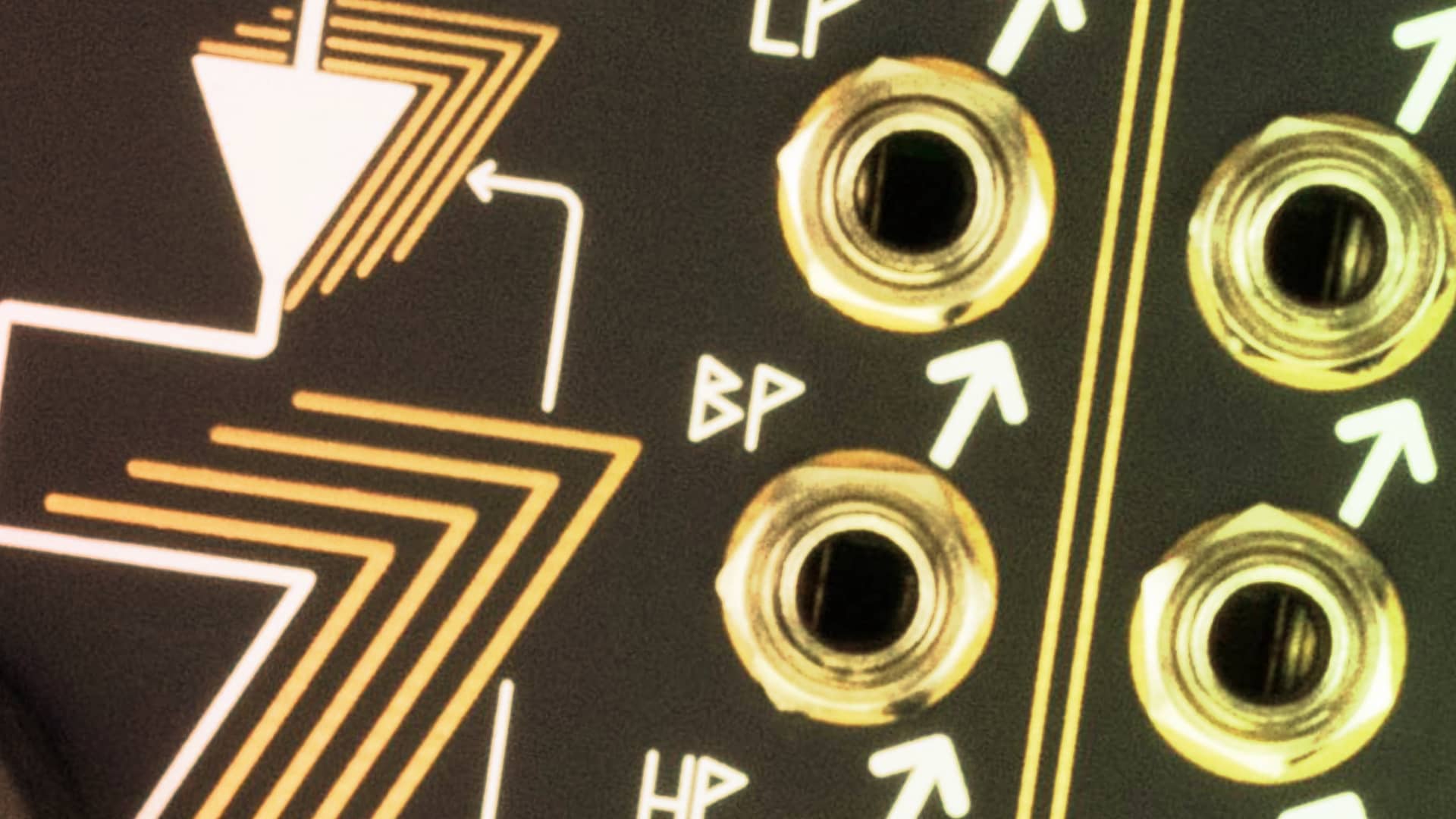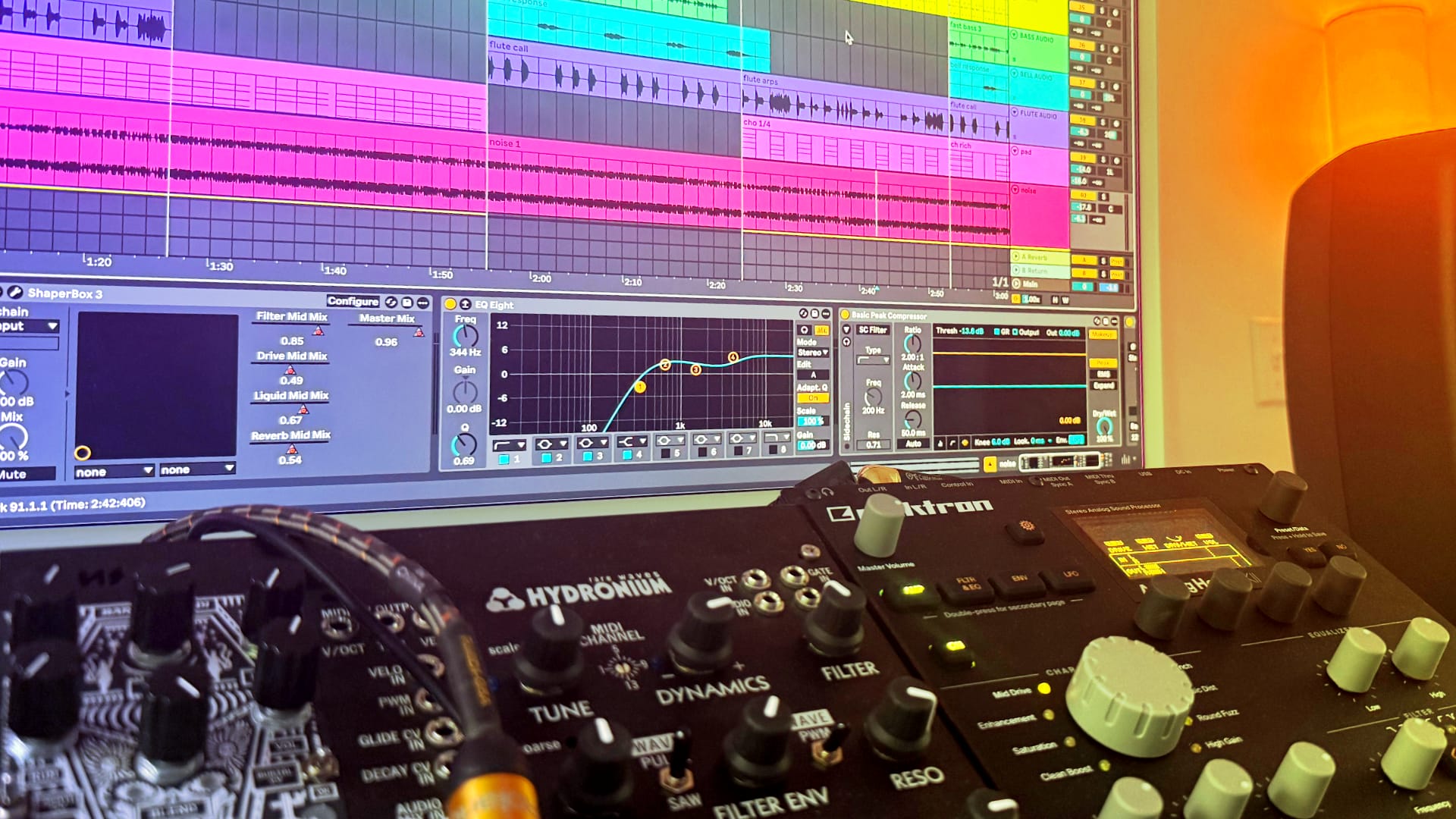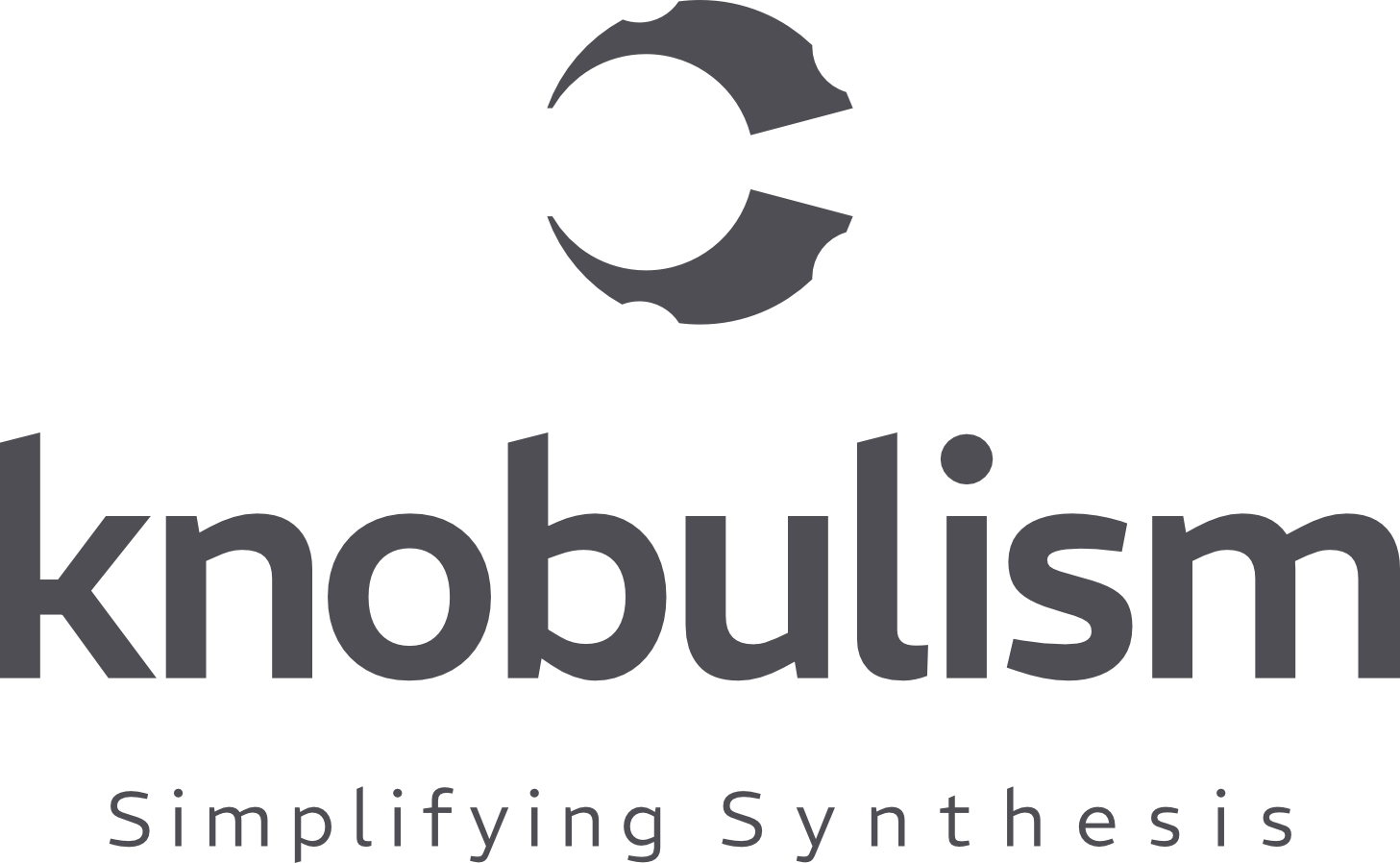Hey folks, it’s Jason (aka Dysonant) here, writing my first in-depth module review article, the focus: Hertz Donut MKIII by Industrial Music Electronics (formerly the Harvestman). Over the years, I’ve had my fair share of encounters with various oscillators (at least 67), but the Hertz Donut series holds a special place in my modular setup. Today, we’ll take a closer look at the MKIII, the latest iteration, and see how it stacks up against its predecessors and peers.
What the Heck Is It?
The first line in the manual is pretty deadpan hilarious: “The Hertz Donut Mark III is a complex oscillator utilizing the finest digital sound synthesis techniques from the mid-1980s.” Funny, but accurate, as the Hertz Donut primarily uses two forms of 80s digital synthesis: frequency modulation (FM) and phase modulation (PM). These synthesis types are further enhanced by some outstanding methods of wave shaping and modulation. Jokes aside, all its features combined actually make it quite a modern module.
This version is less of a successor to the previous models, which seemed to be inspired by the Buchla 259e Twisted Waveform Generator. While the MK I and MK II each had their individual special features, both were dual oscillators with FM cross-modulation and a wavefolder. The MK III departed entirely from this paradigm, taking a more DX-7-like approach to FM using operators. Its exposed parameters make it extremely intuitive to program various FM “algorithms” by using a simple visual modulation matrix. Frankly, for me, it helped demystify FM synthesis, making it way more accessible.
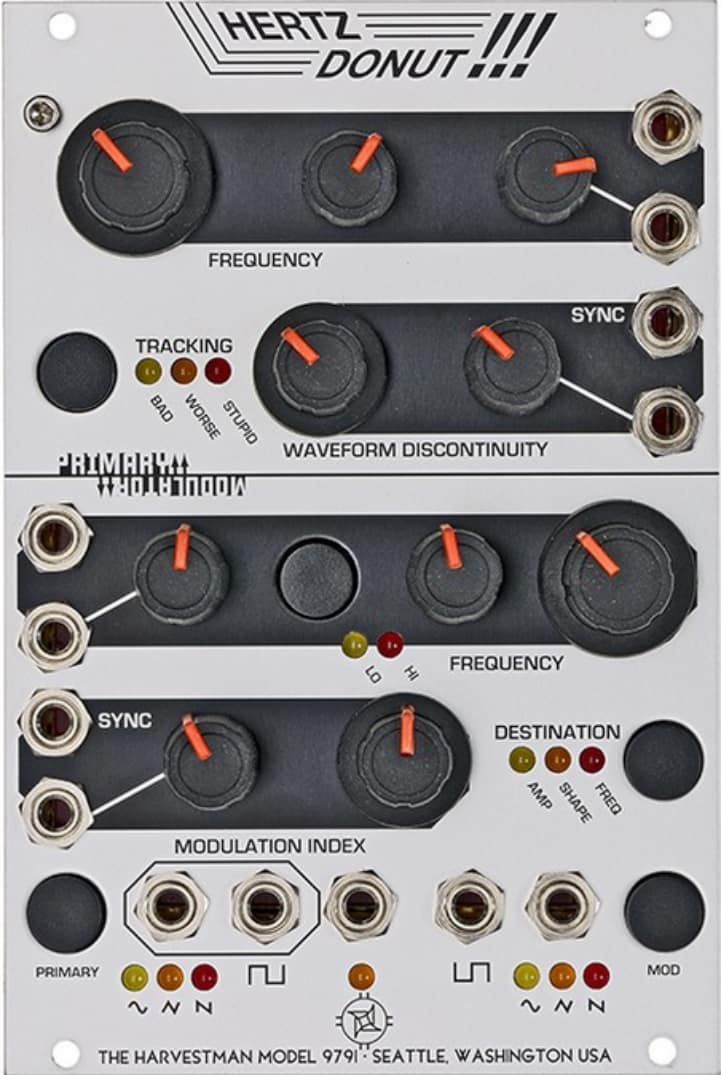
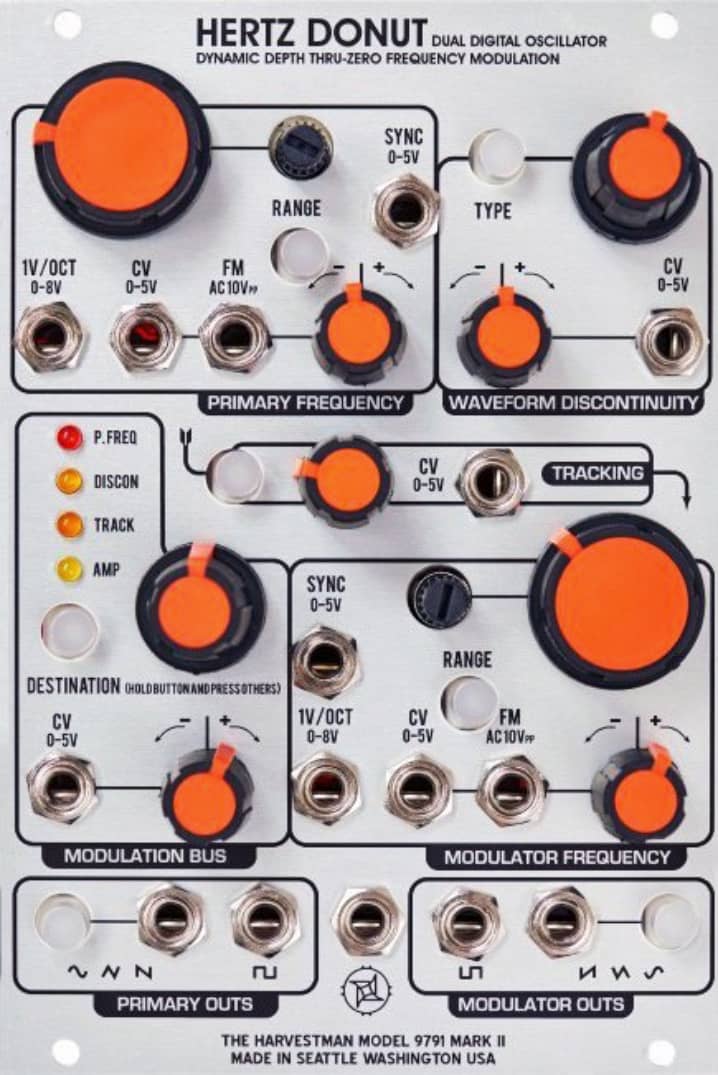

Here are the key specs:
- Primary Oscillator: Sine wave. Yep, that’s it, just a sine.
- Modulation Sources: Two internal operators (also sines) and an external input.
- Outputs: MAIN, AUX (its behavior is assignable), MIX (a combo of MAIN and AUX).
- Modulation Matrix: 3×4 matrix mixer for routing modulation sources to destinations.
- Fold: Assignable to one of three types of wave “folding” that shape the primary osc.
- Unison Detune: For thicker, chorused sounds.
Why Does It Look Like That?
It’s impossible to miss the bright orange knobs that are the signature look of IME. Also, in a world of overused black and gold designs, the silver faceplates, once seen as passé, are now quite refreshing. You’ll either love or hate the looks, but IME modules are decidedly distinctive. Replacing the knobs will instantly change the look, and it is possible to find black faceplates if you desire. I have done that to have IME modules match the rest of a case, but I always return to silver and orange as I am a fan of the look.
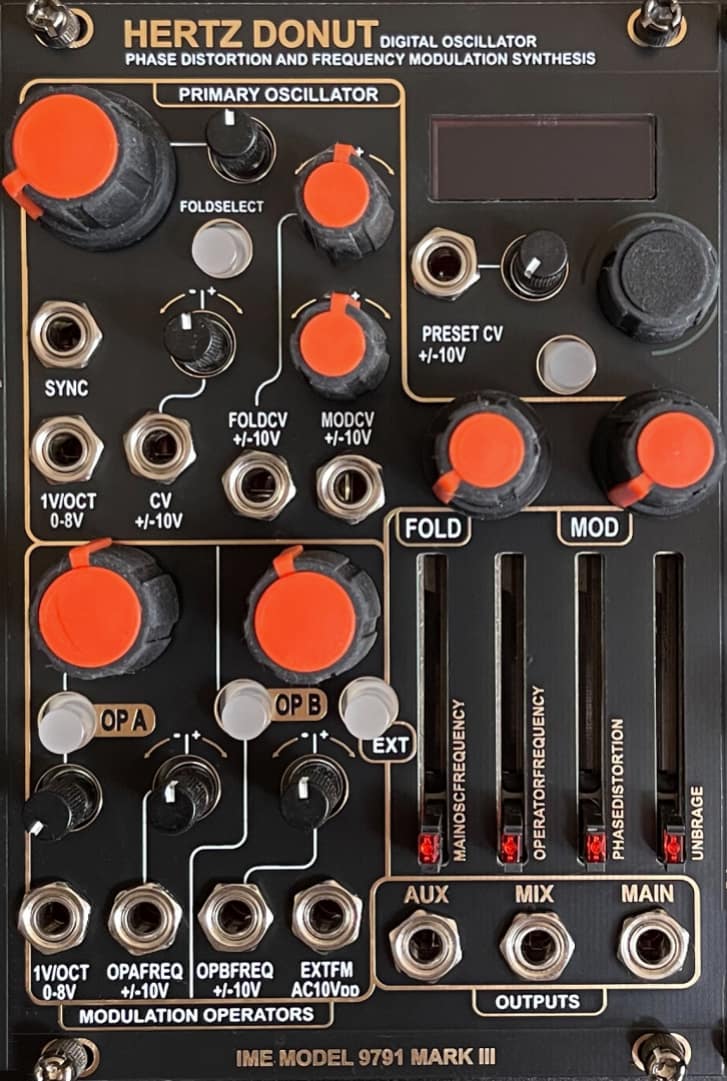
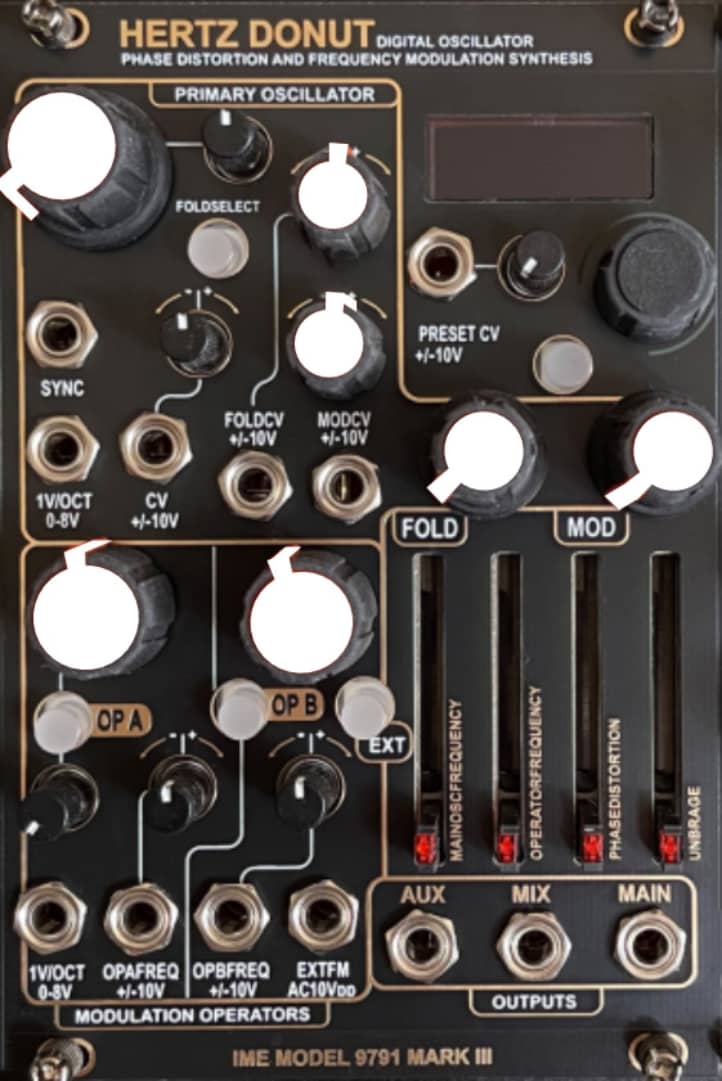

As with all IME modules, the Hertz Donut has a unique control layout. The positioning of the potentiometers, jacks, buttons, screens, and LEDs differ from module to module. This interface design methodology is very deliberate. By differentiating the look of each module, one can know at a glance which module they are looking at. Furthermore, the jacks are placed directly nearby the parameter for which it is used, which often negates the need to read jack and parameter labels to understand what jack is connected to which parameter. I greatly prefer this sort of layout to others that have all the jacks grouped at the bottom and all the parameters neatly lined up on top. Overly organized homogeneous layouts make it really hard to tell side-by-side modules apart. IME modules may at first glance seem chaotic, but their specialized layouts are quickly identifiable and memorized.

Can It Take a Beating?
The MKIII is sturdy, clearly well-made, and assembled. The original version of the HD MKIII had pots that exhibited a little give. This was often mistakenly interpreted as poor build quality. To be clear, thinking slightly wobbly pots are inferior is nonsense. If you buy an HD MKIII used and the pots are a bit wobbly, do not freak out, the module is fine. It’s my guess (pure speculation) that the maker, Scott Jaeger, got tired of hearing his pots wobbled. So, there was a hardware update, and all current and newer modules have rock-solid pots. The other hardware, including PCBs, chips, soldering, and controls, is all pretty modern standard manufacturing and high quality. Over the past 10+ years of owning IME products, I’ve only sent in a few items for repair, typically due to something out of their control or I caused.
Does It Sound Good?
The Hertz Donut MKIII excels in creating an absurdly massive range of sounds, from clean sine waves to complex, harmonically rich timbres. It is easy to dial in FM bass donks, glassy pings, and metal clangs. Like every IME module, it can deliver some pretty harsh and nasty sounds, but it is still capable of creating more gentle and soft tones.
Check out these videos to hear the HD:
What Makes It Special?
- Duo-Phonic Capability: Operator A can be unlinked from the primary osc. It has its own 1v/oct input, so it can be sequenced separately if desired. Further, you can unlink Operator B from the primary and have it sync to Operator A if you want to modulate A with B.
- Morphing Preset System: You can save the entire state of all parameters in the HD as one of 8 presets. Then go crazy designing a new sound which can be saved to another slot of the 8 presets. Using an external voltage source, like a joystick or any offset generator, you can smoothly morph between these two sounds.
- Easy Tuning: When the main frequency is all the way CCW and the fine tune is centered, the HD should be at the pitch C0. It is a super handy and quick way to ensure you are always in tune when the knob is fully left.
Note: Many quantized pitch sequencers range in voltage from -3V (C1) through to +5V (C9), giving you an 8-octave range. Most digital oscillators, including Hertz Donut, only accept positive voltage from 0-8V at the 1v/oct input. Which means that when your sequencer says C3, the HD will be at C0. There are a few ways to mitigate this:
- In your head, convert 0V (C3) from your sequencer to equal C0 on the HD; 1V is C1, 2V is C2, and so on. Though your range is limited to 5V total.
- Turn the HD main frequency knob up until it matches the readout on your sequencer, which basically means the HD will only output from C3-C8.
- Set the HD internally to 2 octaves up, making 0V (C3) from your sequencer now equal C2 instead of C0, which is now only 1 octave off.
- The best option, though (if your sequencer supports this), is to offset your sequencer up three octaves, bringing it out of the negative voltage range entirely into positive. Now your sequencer’s 0V is equal to C0, and the HD will read C0 and continue to match the pitch on your sequencer.
Is It Fun and Easy to Use?
The MKIII is user-friendly, with most functions accessible on the panel. There are a few shared controls that are really easy to grasp. The options in the menu system allow for detailed control without being overwhelming. The module includes shortcuts for quick adjustments to menu options during performance. The preset manager is particularly useful, allowing for the storage and recall of 8 patches. All in all, you can figure out a lot of this module out of the box, but to get the most out of it, you will need to read the manual.
The Good and the Bad
Pros:
- Makes FM fun and easy
- Versatile sound shaping capabilities
- Intuitive interface with clear visual feedback
- Top-tier build quality
- Simple to use FM algorithm modulation matrix
Cons:
- Complicated firmware updates requiring third-party hardware
- Not immediately obvious how to do everything
- Some menu navigation required for deeper functions
Is It Worth the Cost?
If you like FM and PM synthesis, the Hertz Donut MKIII is probably for you. If you feel like you are not getting the FM tones you want from your complex oscillator, you might want to give the HD a try. If you want to experiment with 3-operator FM synthesis, then I cannot really think of a better way to get started. The Hertz Donut MKIII is a standout oscillator in the modular synth world, offering a blend of vintage digital synthesis and modern usability. Whether you’re into creating complex, evolving soundscapes or just need a reliable oscillator for your patches, the MKIII has got you covered.
How Does It Rate?
For outstanding three operator frequency modulation
Thanks for joining me on this exploration of the Hertz Donut MKIII. If you have any questions or want to share your own experiences with the MKIII, drop a comment below. Happy patching!

